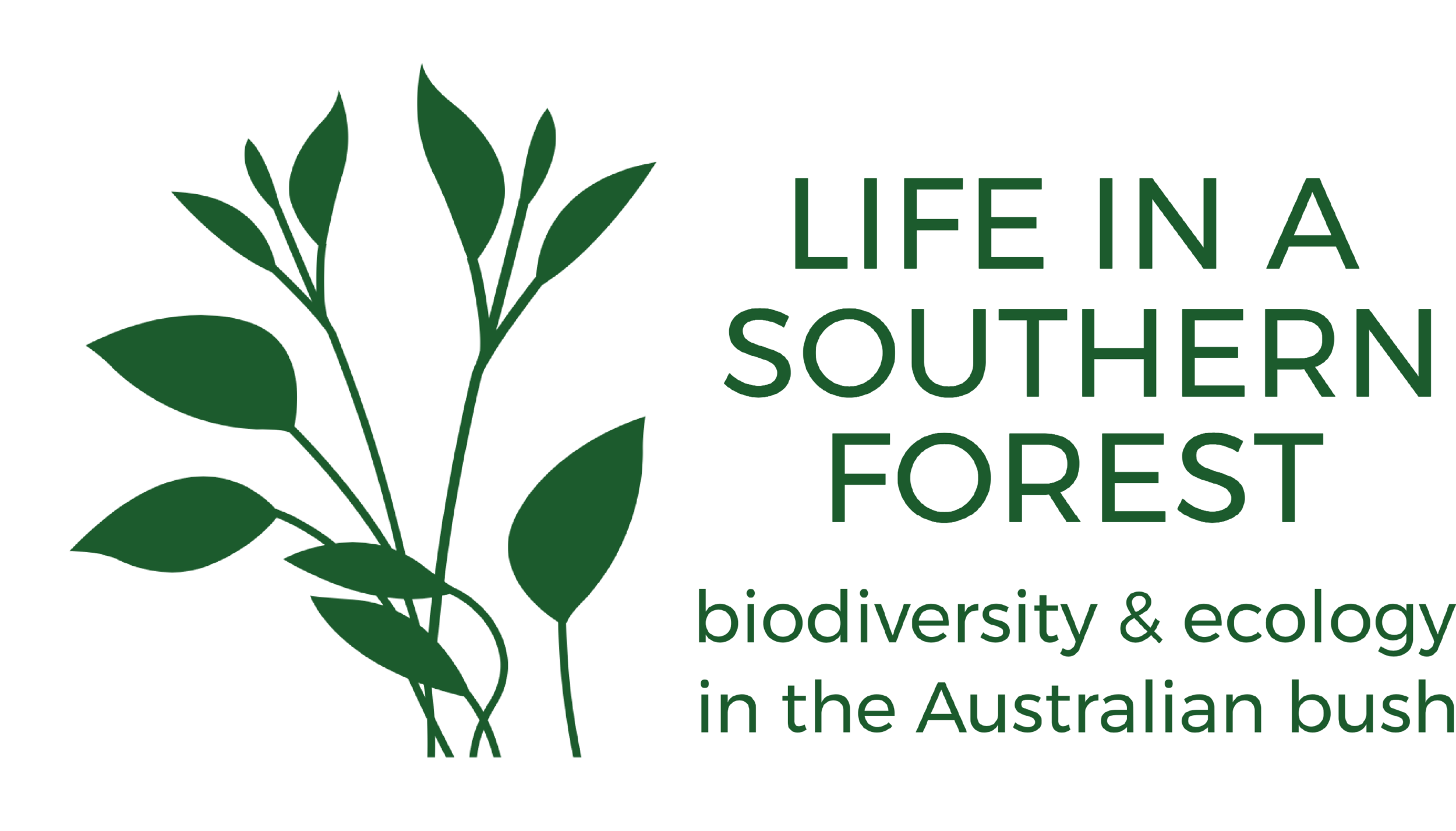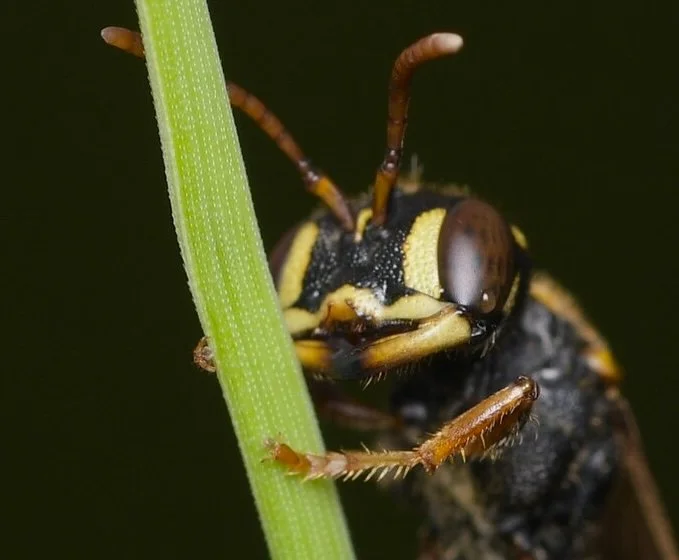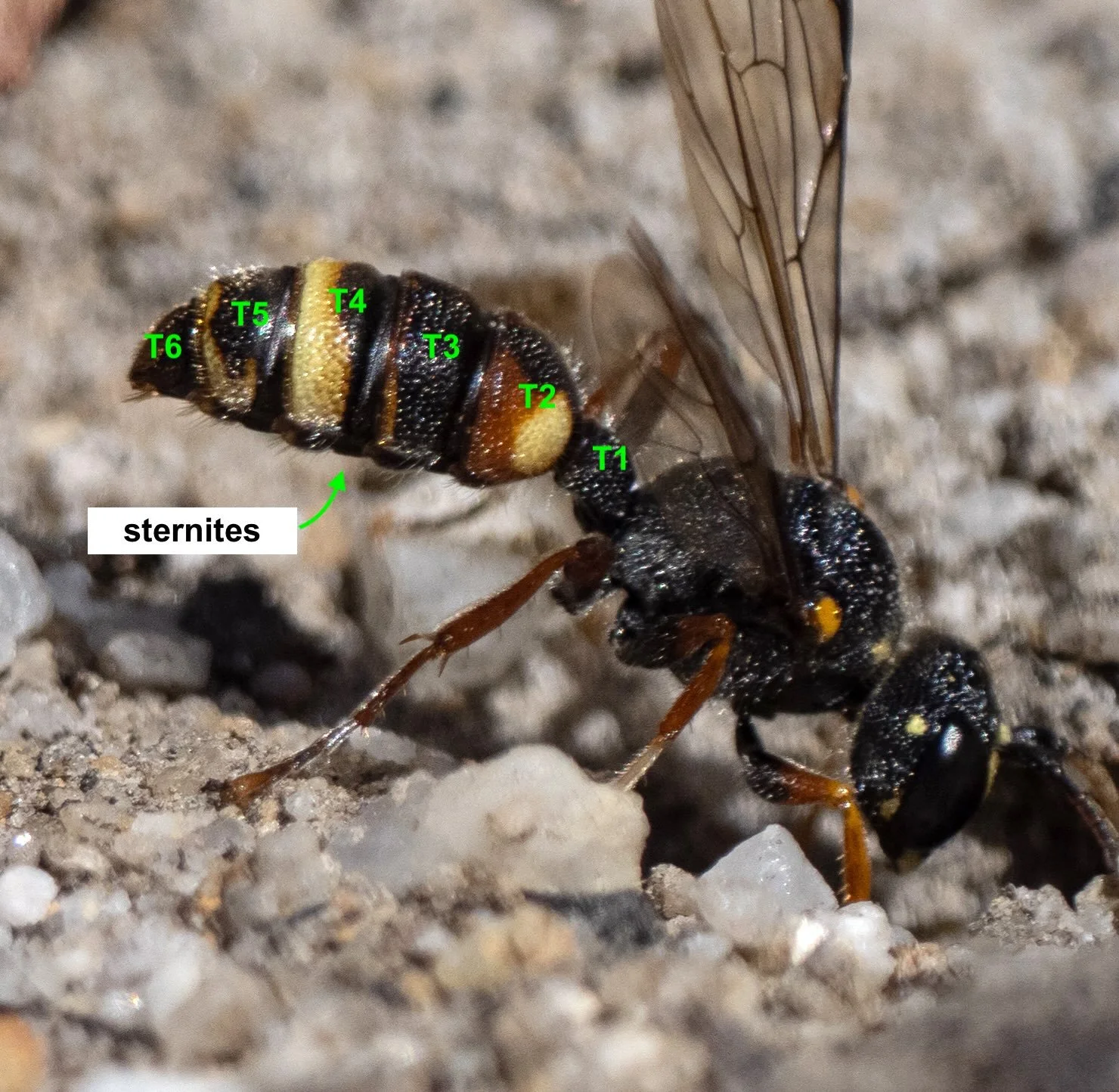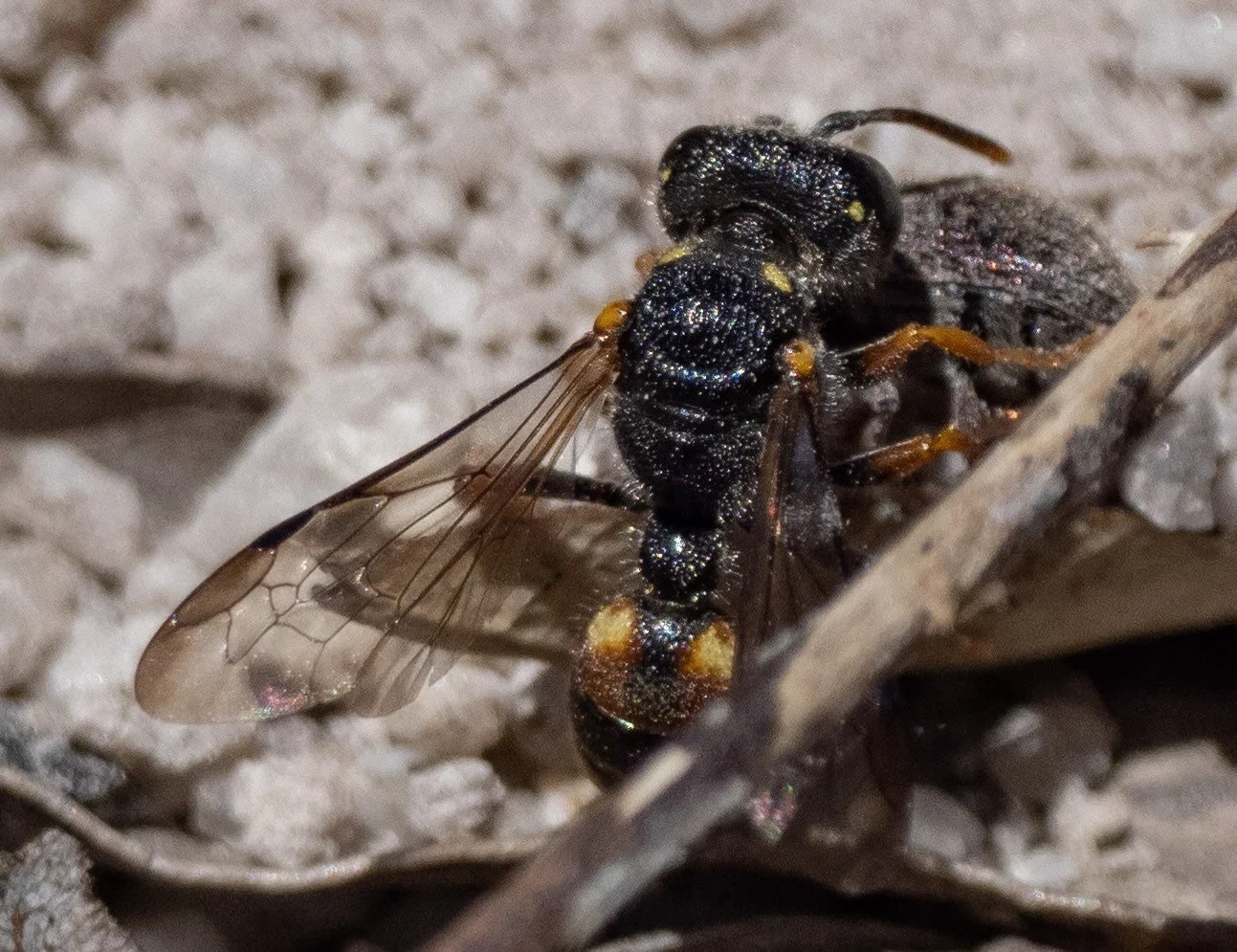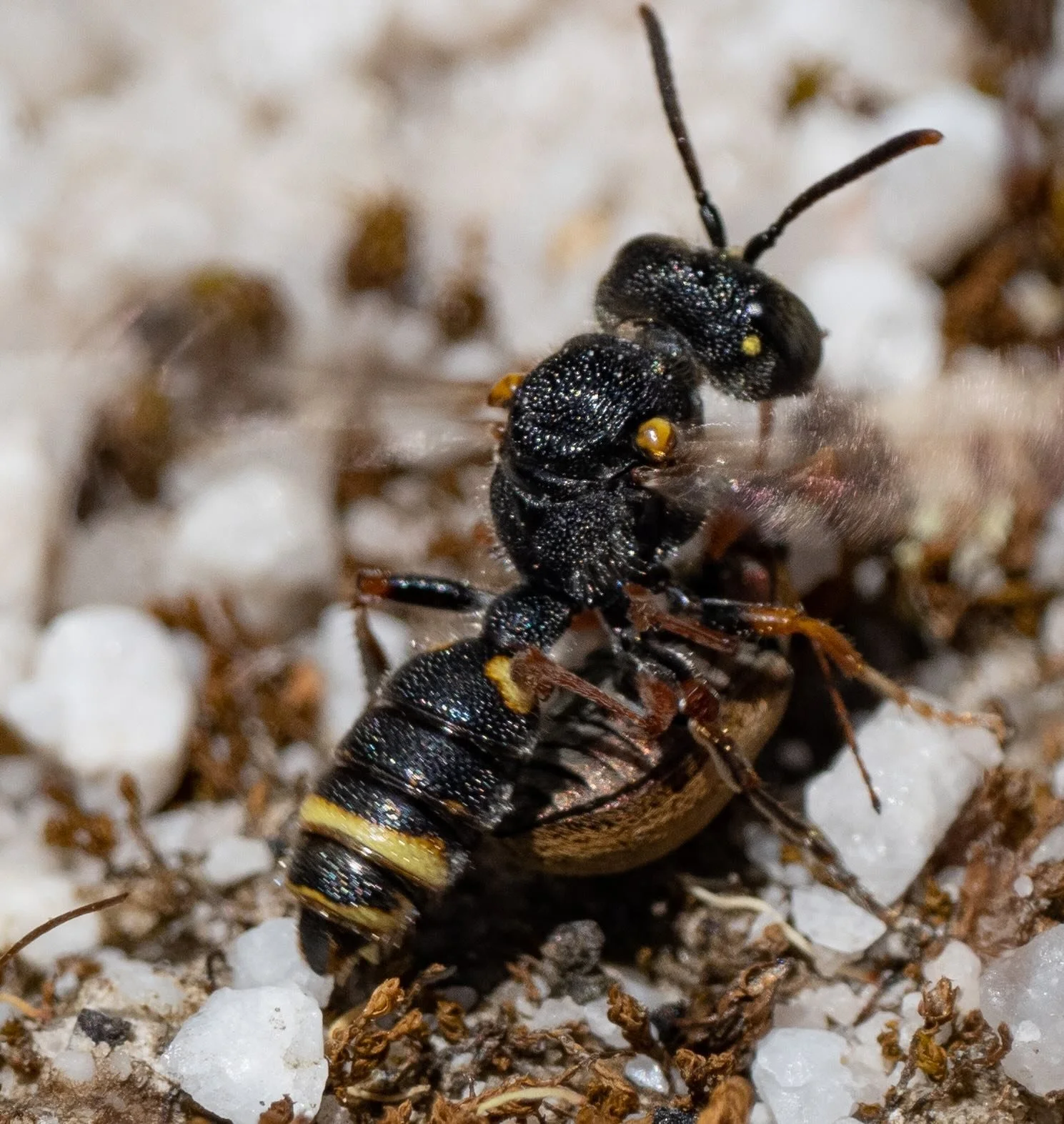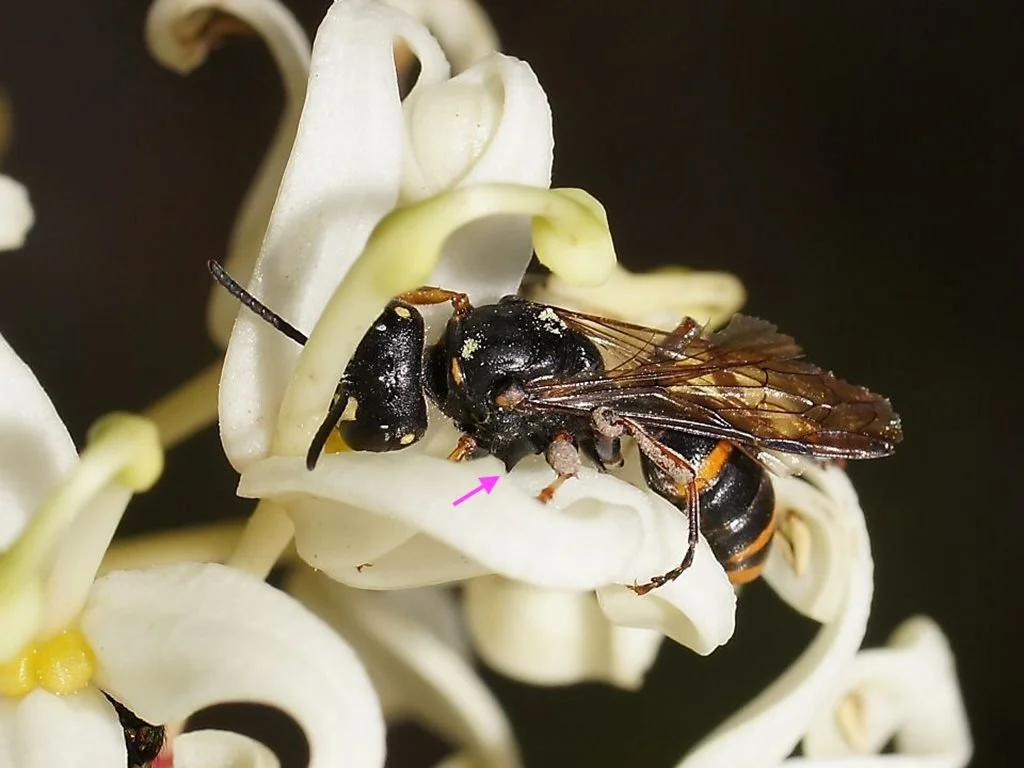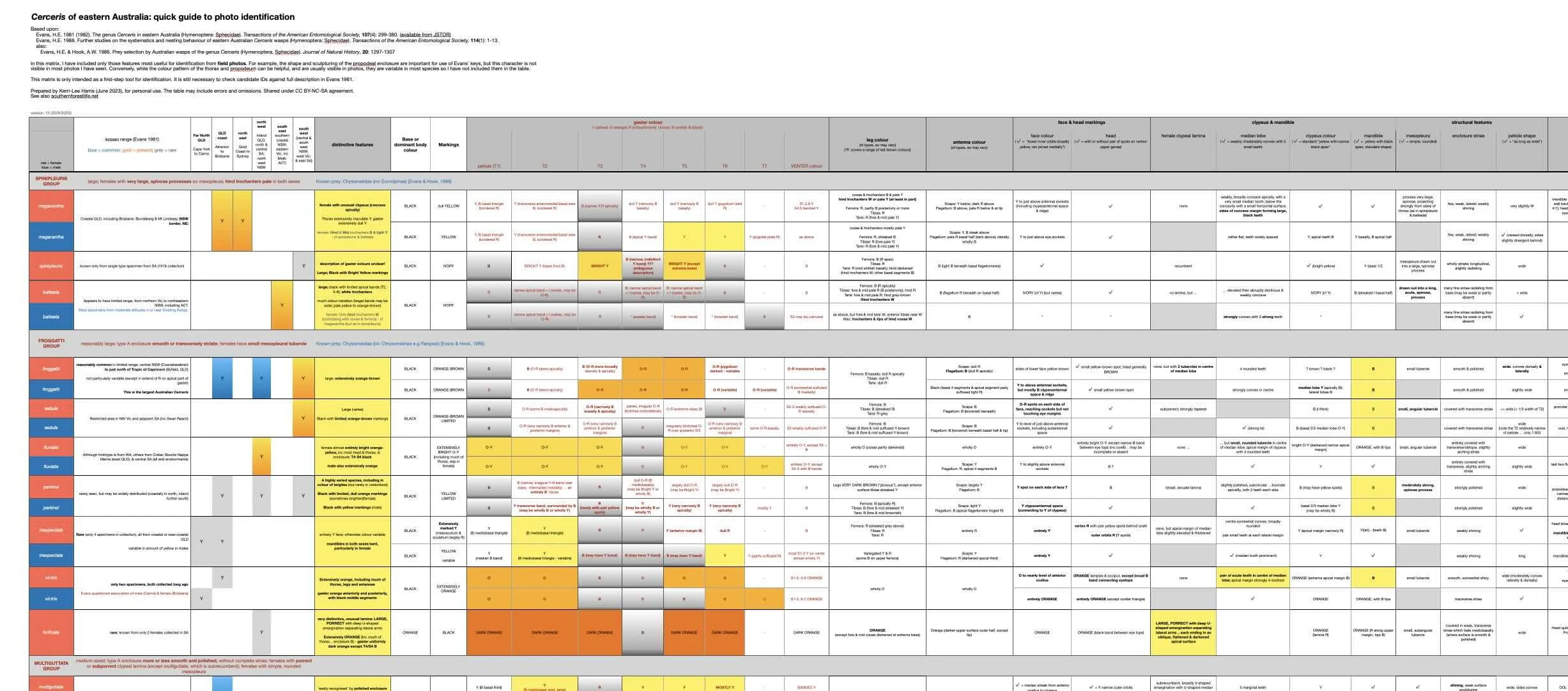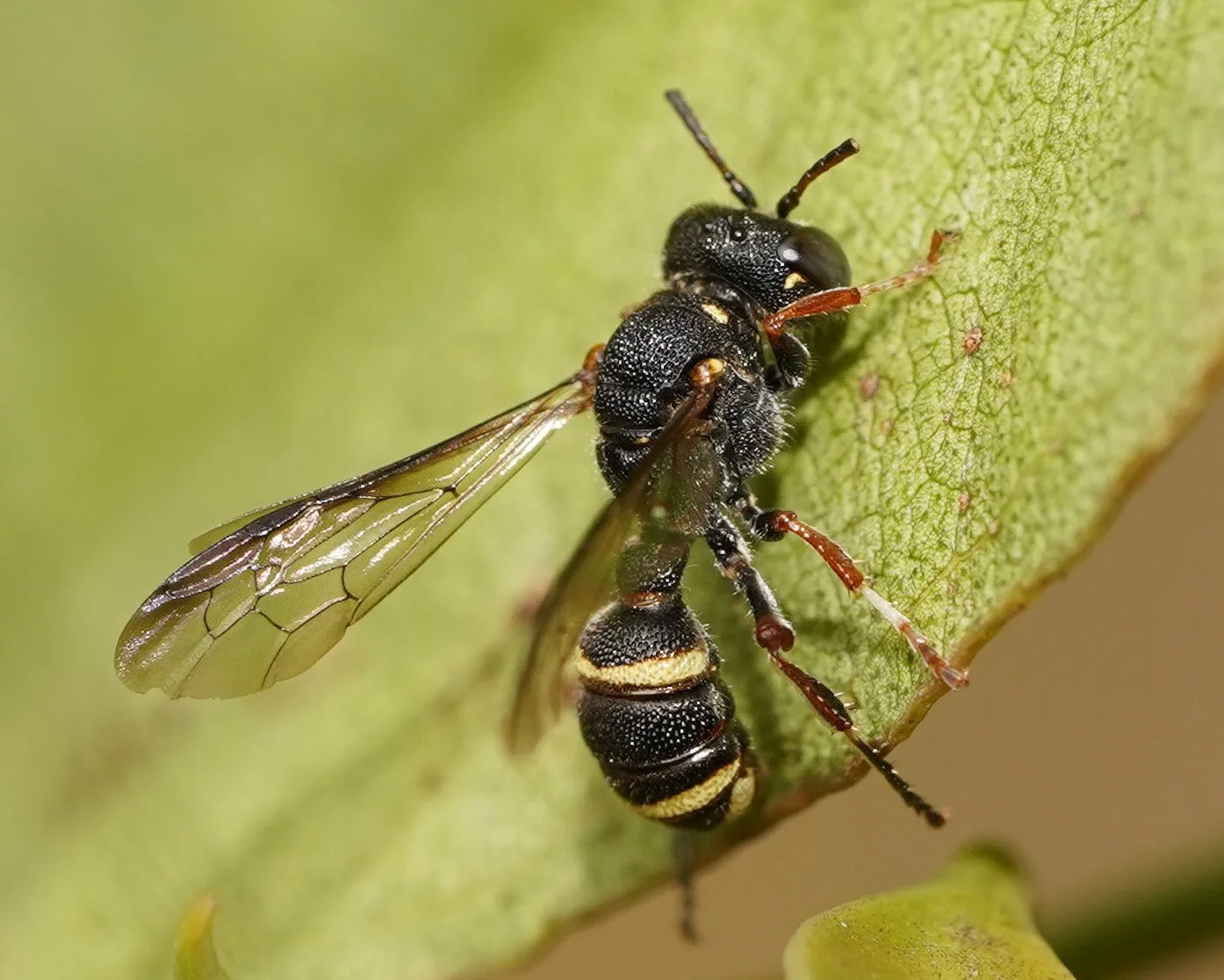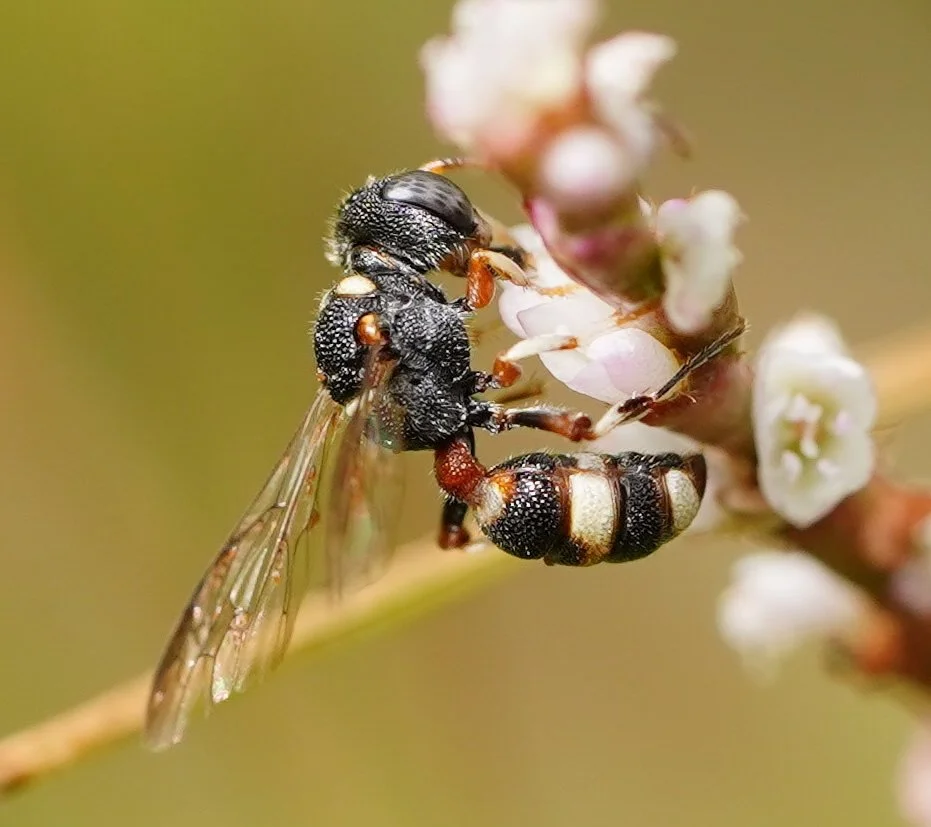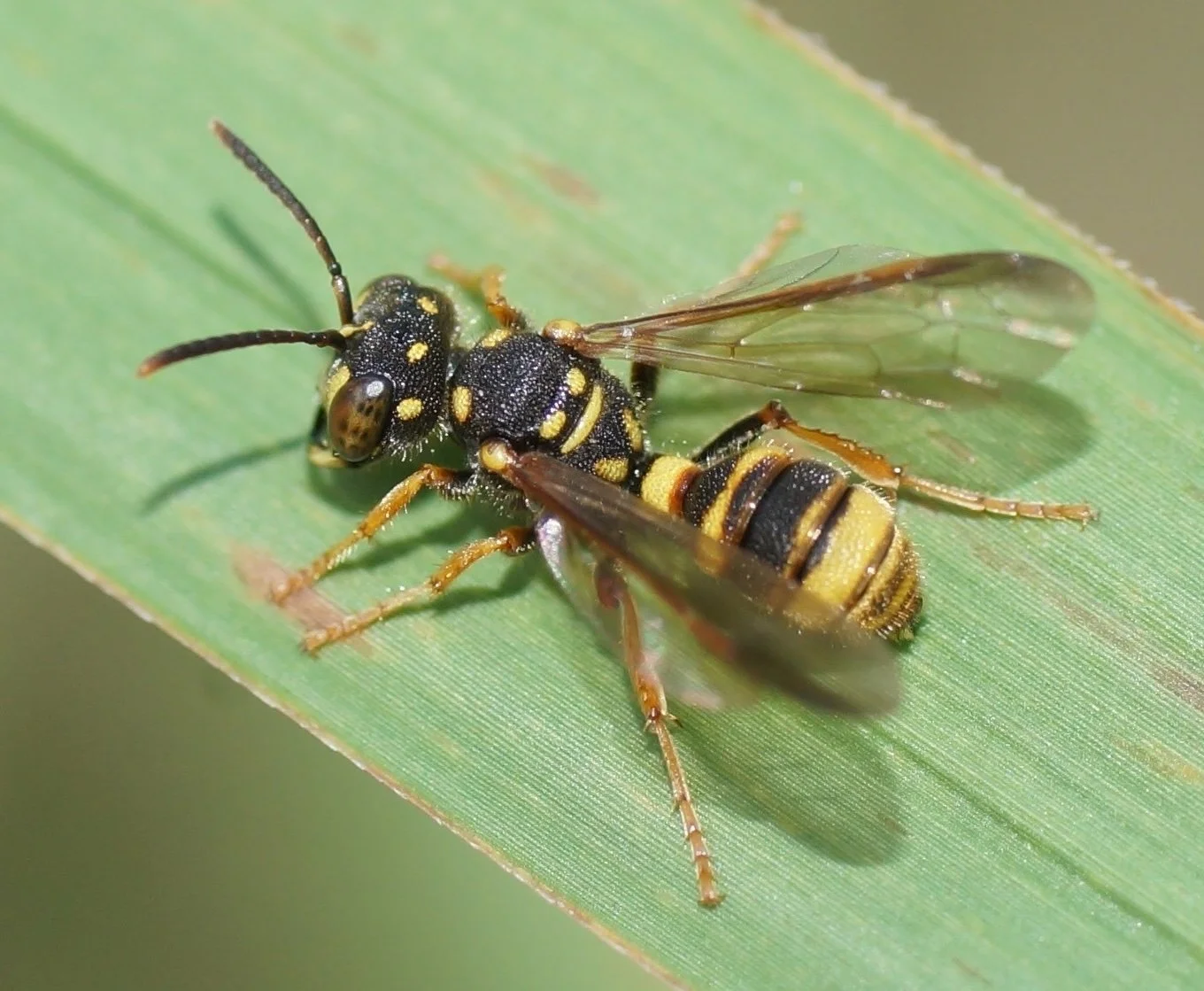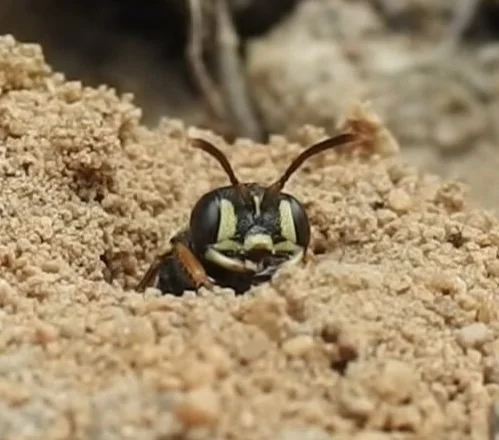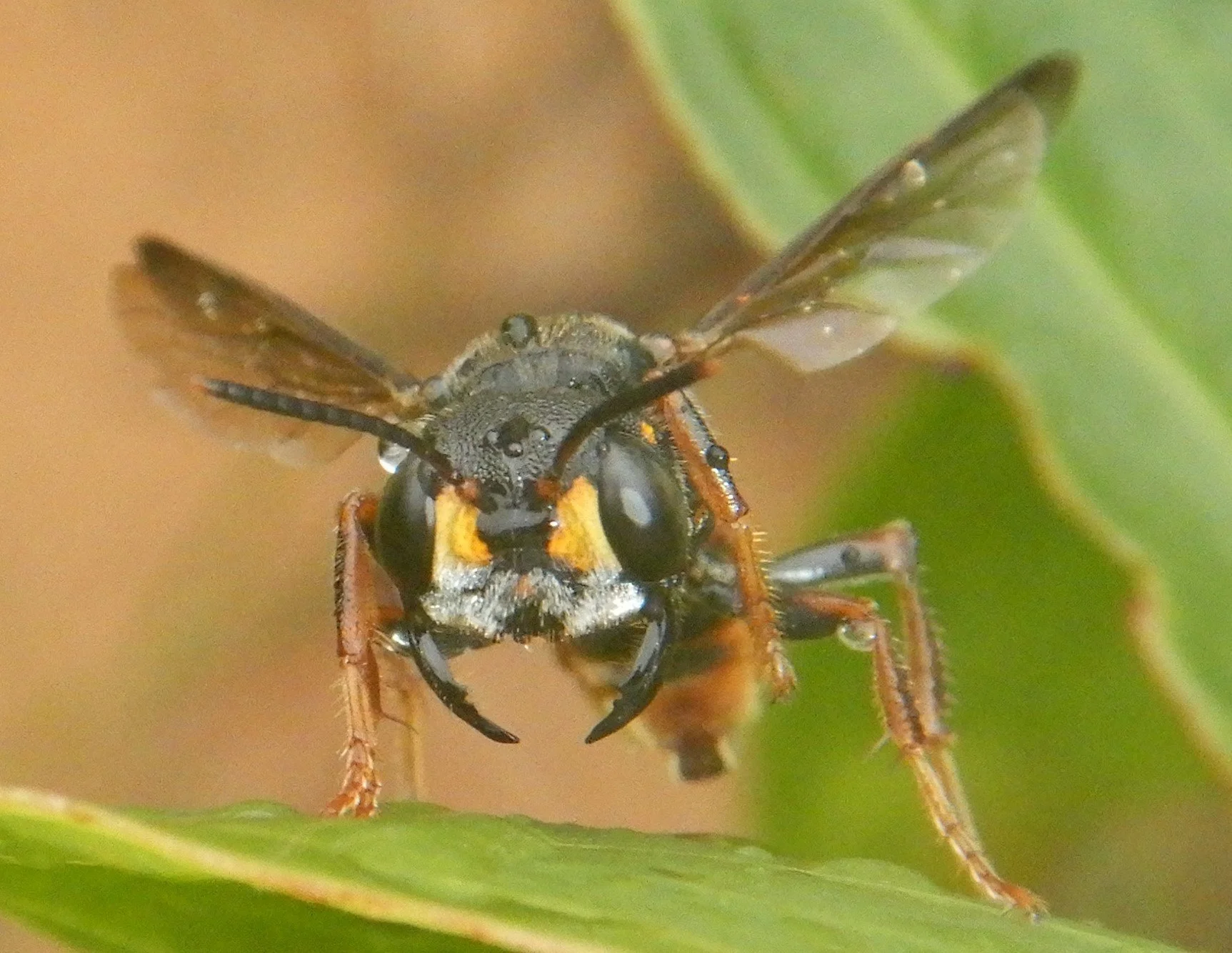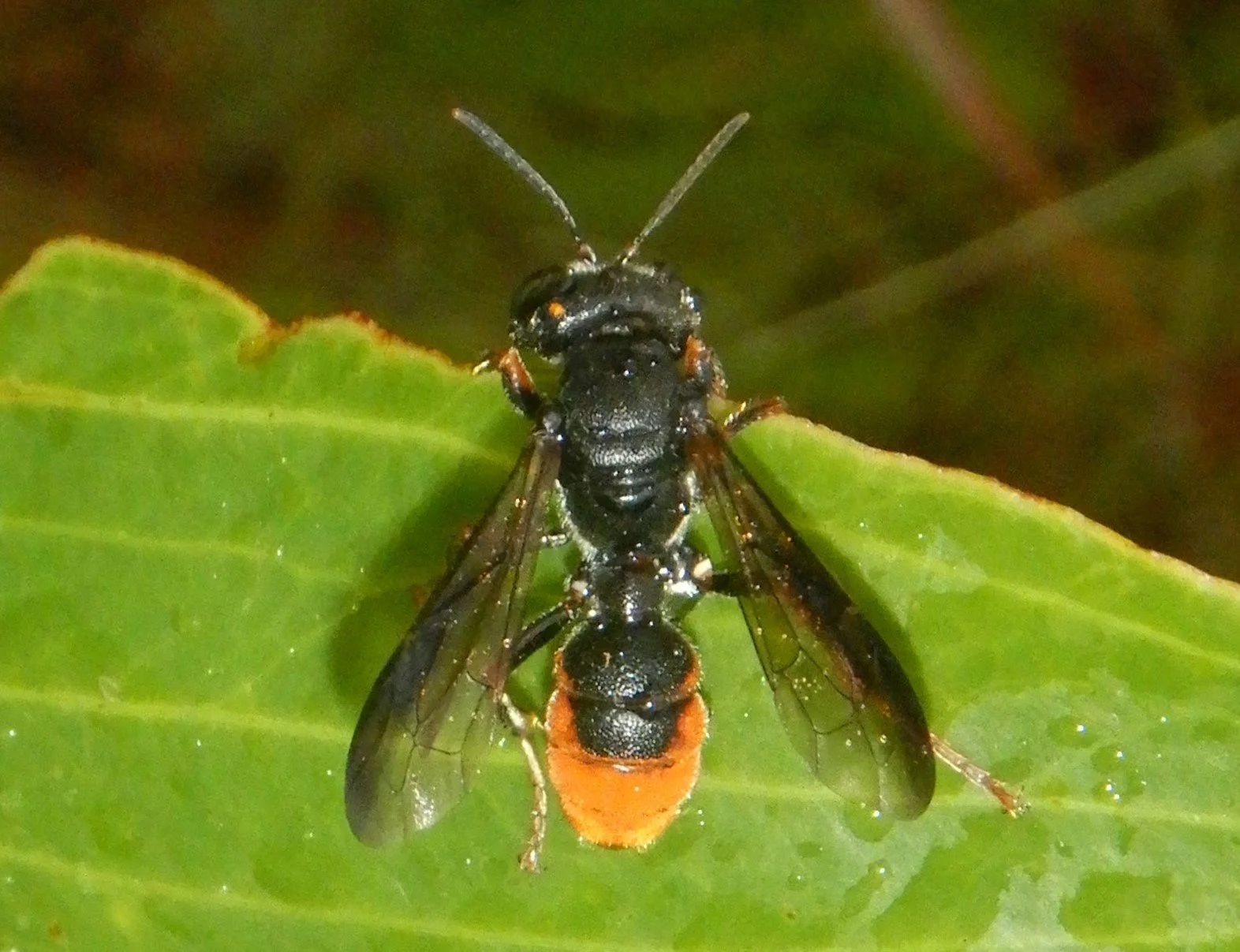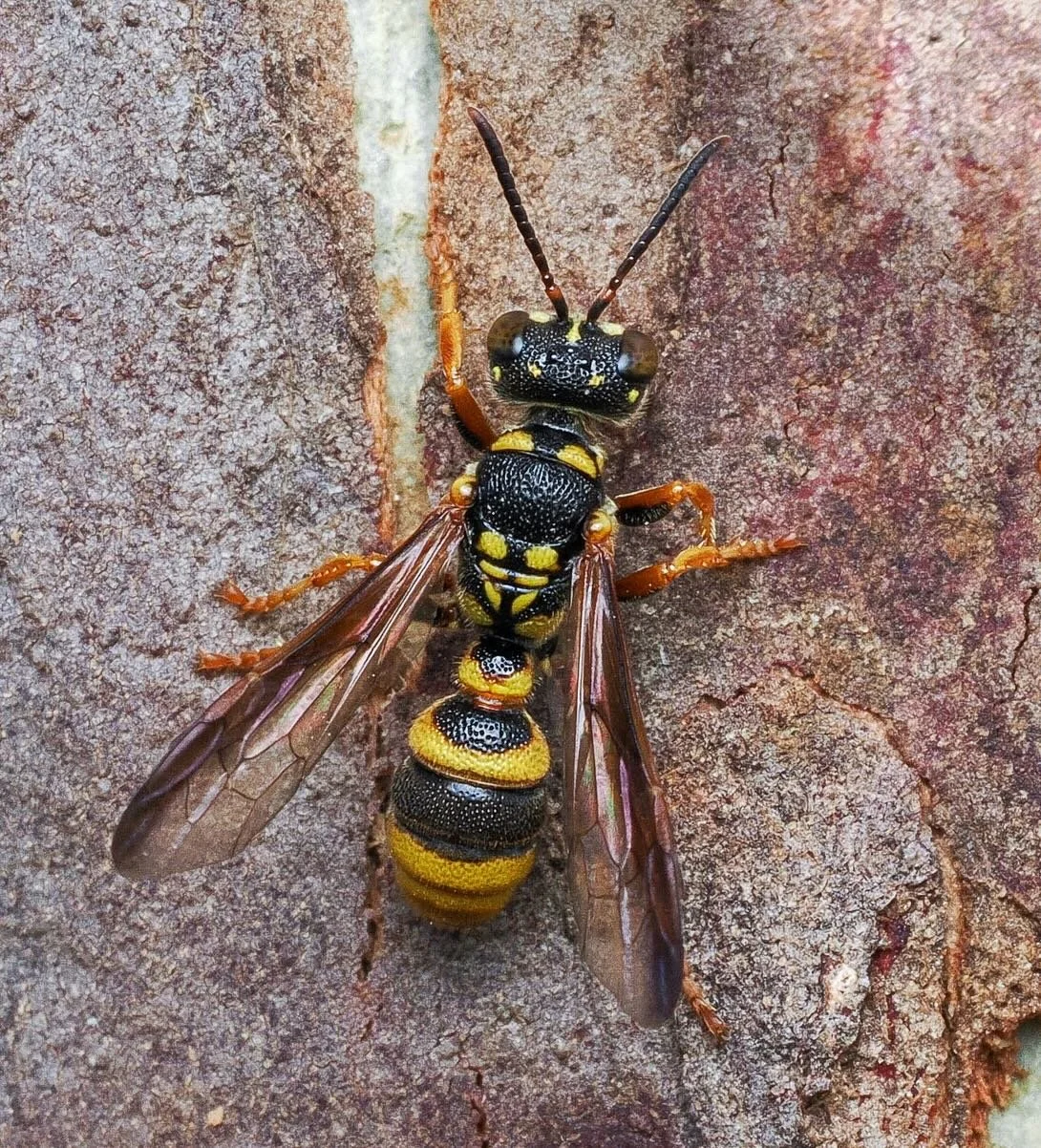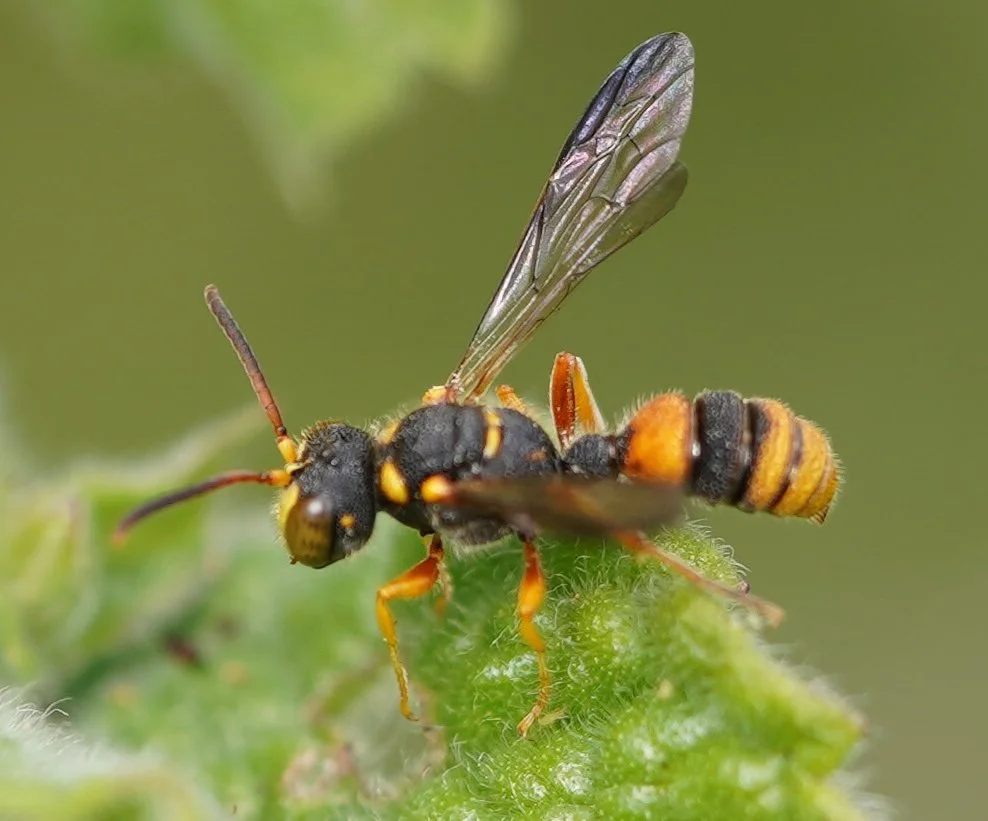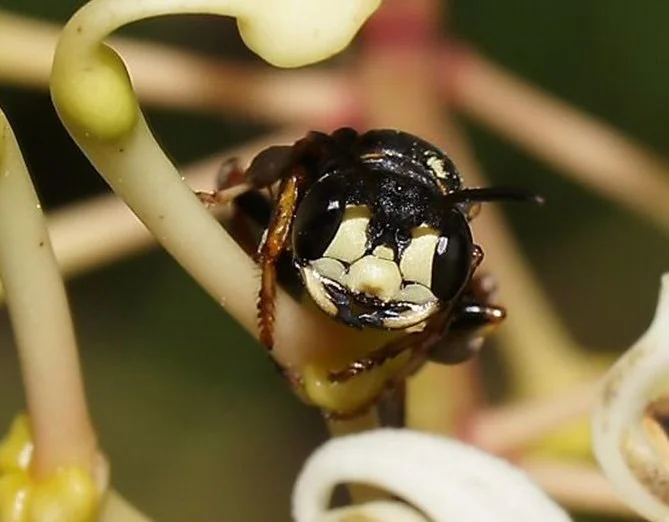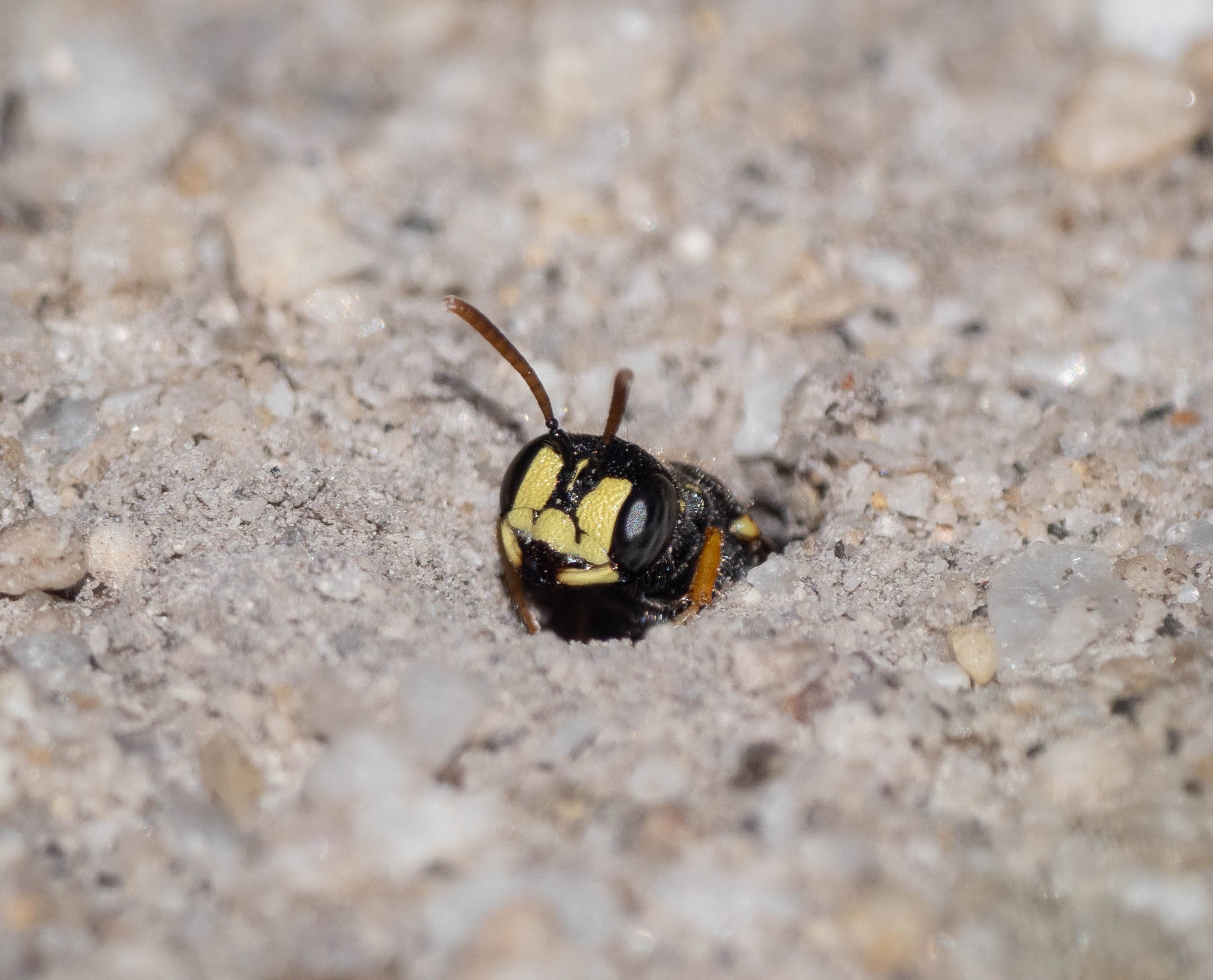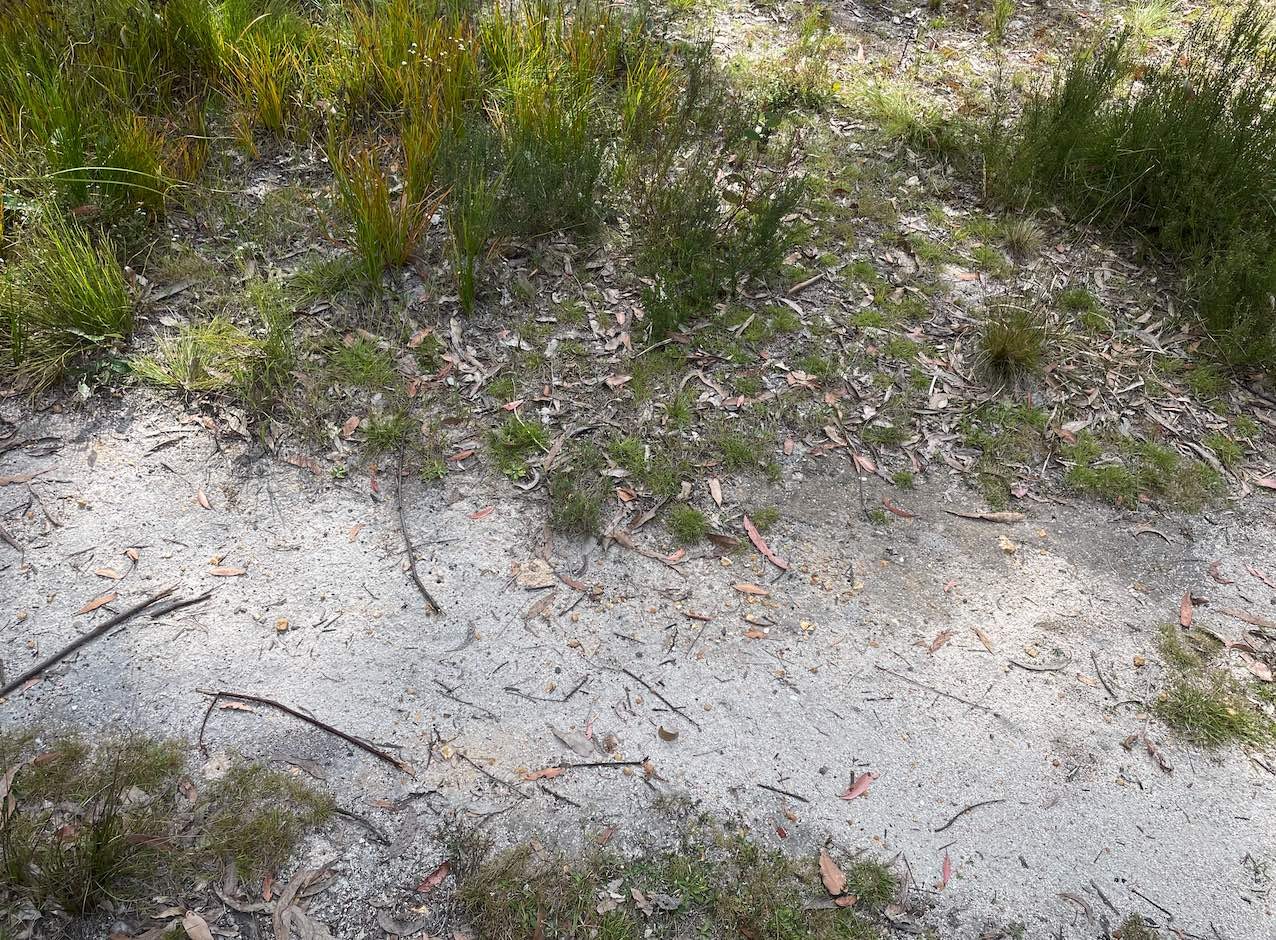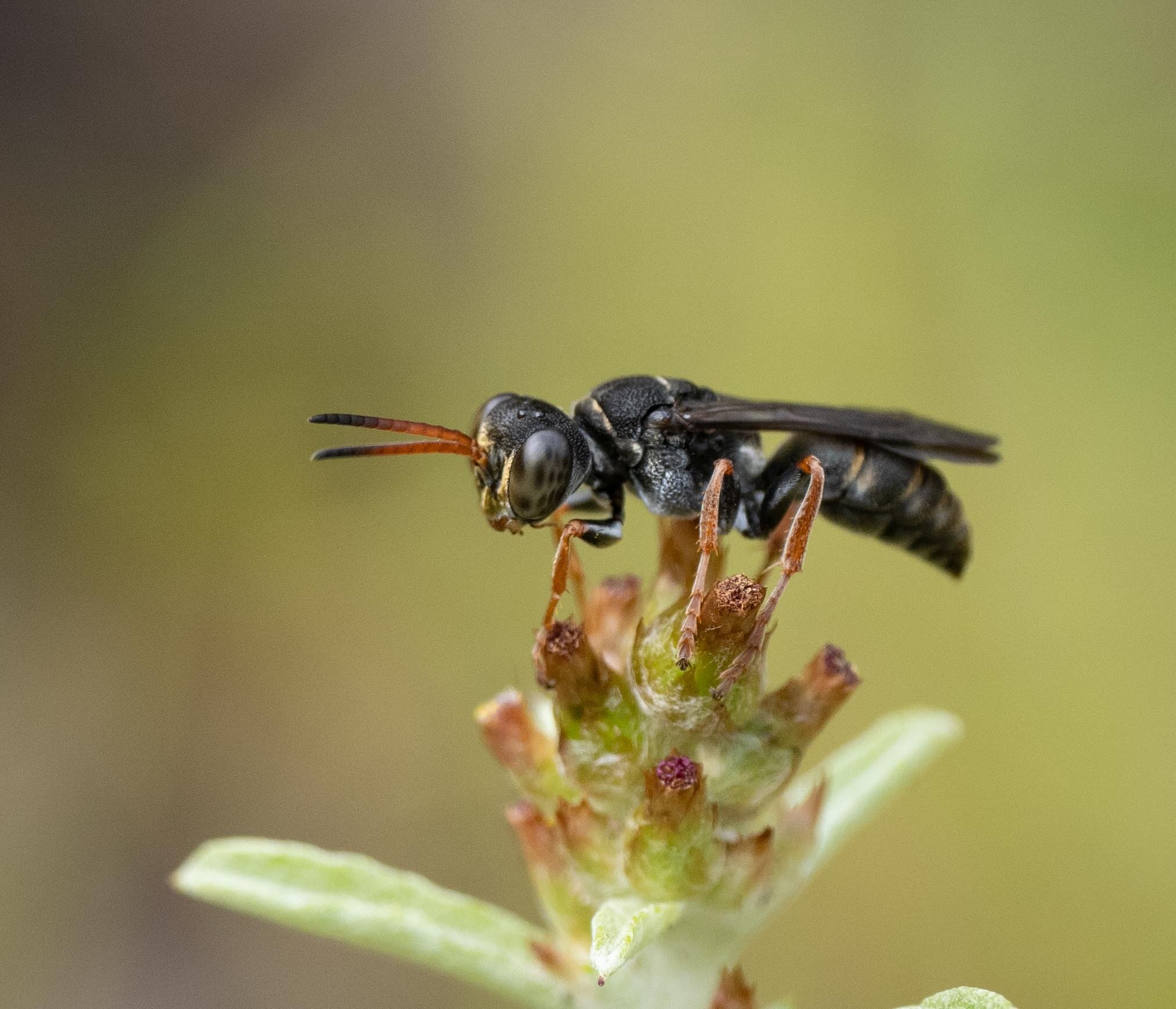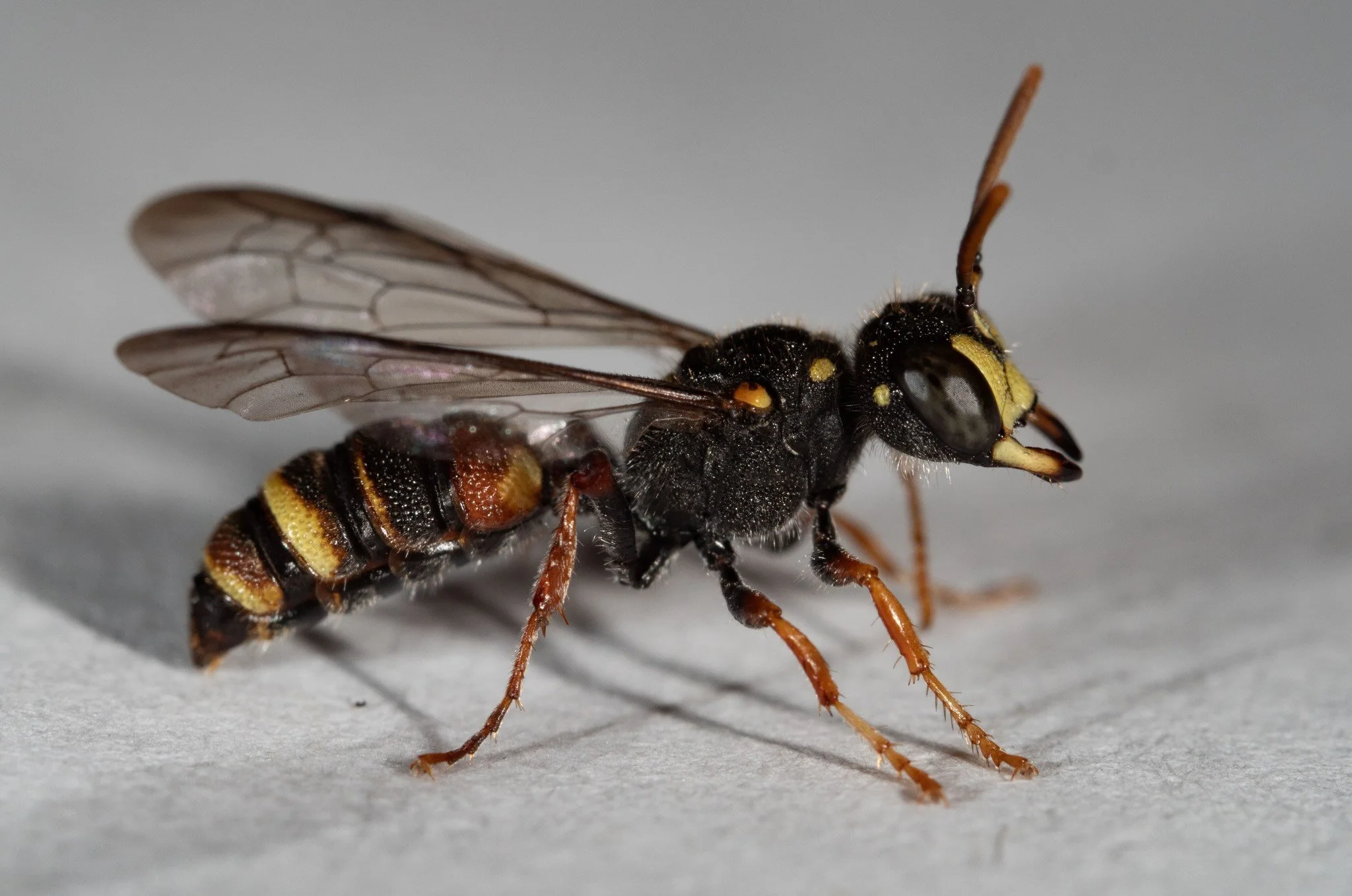
Workbook
Cerceris is a huge genus, with nearly 900 species worldwide (GBIF). There are currently 50 described species in Australia (AFD; Evans, 1982; Evans, 1988). Cerceris construct multi-celled nests in firmly packed soil. Most provision their nests with beetles (Bohart & Menke, 1976) – hence the common names of ‘digger wasps’ and ‘weevil wasps’. Larvae feed upon the deeply paralysed beetles stored in their cell. Adults take only nectar and honeydew.
Most Cerceris species are strictly solitary, but there is convincing evidence of nest sharing occurring in at least ten species (Polidori et al., 2006). Notably, this includes seven Australian species (C. antipodes; C. australis; C. goddardi; C. minuscula; C. unispinosa; C. windorum; C. xanthura).
Recognising the genus
Cerceris are quite readily distinguished from all other Australian crabronids. They are the only members of the subfamily Philanthinae … or what may soon be recognised as Philanthidae, alongside Crabronidae and Bembicidae (Sann et al. 2018).
The suite of characters that, together, are diagnostic for Cerceris include the shape of the gaster, the coarse sculpture of the body, and the shape and spacing of the eyes. These and other features characteristic of Cerceris are illustrated in the gallery below.
- gaster constricted between segments
- body coarsely sculptured
- ocelli normal
- 3 submarginal cells in forewing; SCII nearly always petiolate (as here)
- pronotal collar short
- first gastral segment usually pedunculate (sometimes a narrow petiole)
- body coarsely sculptured
- head wide
- eyes widely separated
- ocelli normal
- 3 submarginal cells in forewing; SCII nearly always petiolate (as here)
- pronotal lobe & tegula separated
- head wide
- eyes widely separated
- eyes slightly (as here) or strongly converging above
- antennal sockets divided by a strongly raised ridge
- clypeus trilobed (although not always as obviously as in this species), with the median lobe extending upwards and truncate a short distance below antennal sockets
- gaster constricted between segments
- body coarsely sculptured
- head wide
- hind femur apically expanded, truncate
- gaster pedunculate or petiolate; T1 much narrower than T2
- gaster constricted between segments
- body coarsely sculptured
- head wide
- 3 submarginal cells in forewing; SCII nearly always petiolate (as here)
- well-defined pygidial plate
- gaster constricted between segments
- hind femur apically expanded & flattened
Distinguishing between species
Much of what we know of Australian Cerceris is down to the efforts of H.E. Evans, R.W. Matthews, and A.Hook. Evans based his detailed revision of the genus (1982) on material they collected during their various behavioural studies around the 1970s, alongside specimens from all institutions with significant holdings (including ANIC, Queensland Museum, Australian Museum, South Australian Museum, and the British Museum of Natural History).
In my experience, the distinguishing features most useful in field photos are: the head shape, most notably the clypeus in females; the petiole shape, for some species; and the colour pattern, particularly the gaster, legs, and in many cases the propodeum.
Colour varies, of course, and some species are particularly variable … most notably, C. antipodes. Such variation is noted in the summary table (matrix) below. Yet despite this, the overall colour pattern is (in Evans’ own words) “highly diagnostic” (1982, p. 301).
In Cerceris, the clypeus is trilobed (L= lateral lobe; M = median lobe).
The clypeal lamina of the female is a plate-like elevation arising from the median lobe. It varies significantly in different species, and is therefore of considerable diagnostic value.
In this species, Evans (1982) describes the clypeal lamina as “recumbent, nearly as wide apically as median lobe” (p. 357).
Evans variously describes the clypeal lamina as porrect, subporrect, subrecumbent, recumbent, or absent. These categories are not absolute, and I find the distinction between subrecumbent and subporrect can be quite tricky. But they are useful descriptors (see illustrative figures extracted from Evans, included in the ‘Bits & pieces’ section of this page).
A lateral or near-lateral view is helpful in assessing the shape of the clypeus in detail.
In addition to the angle of the lamina (porrect, recumbent, etc), some are distinctively shaped and/or bear prominent teeth.
https://inaturalist.ala.org.au/observations/267493072
(image courtesy of Nick Lambert)
The clypeal lamina can be quite extraordinary, as highlighted here. This museum specimen was identified by H. Evans as Cerceris aurantiaca, and he describes the clypeus as follows:
“clypeal lamina much longer than wide, porrect but strongly curved downward, apex truncate”
Image kindly provided by Dr Ben Parslow, Collection Manager, South Australian Museum (SAMA)
Male Cerceris lack the clypeal lamina, but the trilobed shape of clypeus is usually evident. The median lobe typically has 3 small apical teeth or may be truncate.
Males also typically have obvious ‘hair brushes’ (arrows) on the apex of the lateral lobes.
The shape of the mandibles varies considerably between Cerceris species, but they are subject to wear so interpret with caution. For example, this female photographed in February has extremely eroded mandibles. Cerceris females can live for months, and their mandibles do a lot of digging in that time.
The colour pattern of the metasoma is remarkably diagnostic. This is particularly true for the colour of tergites (T1/petiole – T6 above). Note that the tergites are visible in dorsal and lateral views, as they wrap well around the segments. The corresponding sternites are best seen in a ventral view, and as such are less often captured in field photos.
C. antipodes is a particularly widespread species, and is one of the most variable in terms of colour pattern. Despite this, the large, yellow, anterolateral spots of T2 are diagnostic.
Note that in this example, the spots are surrounded by a reddish-brown colour.
The extent of melanisation (‘blackness’) is a common contributor to intraspecies colour variation.
Compare T2 in this individual with the previous image. The yellow anterolateral spots are present, but otherwise T2 is entirely black. Note also the absence of yellow spots on the pronotum.
Different colour morphs can tend to reflect location. For example, Evans states that southern populations of C. antipodes tend to be darker than those from northern NSW and southeast QLD.
Colour often also varies within populations. These two wasps were part of the same nesting aggregation … observed at the exact same location, just a couple of weeks apart.
In most Australian Cerceris the mesopleuron is rounded in shape. However, in a few species the lower part bears small tubercles or even large spines … as here (arrow).
https://inaturalist.ala.org.au/observations/25743224
(image courtesy of Reiner Richter)
Drawing upon Evans’ 1982 revision plus a few subsequent works, I’ve developed a summary table which I continue to refine. Priority is given to those features that might be seen in field photos.
Some of the more readily identifiable species
Despite the large number of species and the intraspecific variation of many, it is possible to confidently identify many of the more common species from field photos. Below are a few examples, just to illustrate the diversity in colour pattern. Cerceris are often strikingly colourful!
Male Cerceris are typically smaller than their female counterparts. They can be recognised by the additional visible tergite (T7), although it is often small, and by the number of antennal segments (a total of 13, rather than 12).
The colour pattern of males typically differs somewhat from the female. For example, in southern C. antipodes males the anterolateral spots of T2 are typically large and medially joined to form a continuous basal band.
A dark-looking wasp with limited yellow markings, reasonably common in southeastern Australia.
- note T2 has yellow spots or a band in the apical (posterior) third (in contrast to the anterolateral markings of C. antipodes)
https://inaturalist.ala.org.au/observations/39041814
(image courtesy Reiner Richter)
The most widespread of any Australian Cerceris – all mainland states & territories. Note that no Cerceris are known from Tasmania.
- very small (forewing length just 5mm)
- petiole red (not unique, but very unusual)
- T3 pale, with mediobasal black wedge (usually)
https://inaturalist.ala.org.au/observations/70806099
(image courtesy Reiner Richter)
Placed in the same species group as C. antipodes and C. australis, and so similar in several structural features. However, the colour pattern (while variable) is quite distinctive … and the female has a particularly broad head.
Note that the petiole is extensively yellow, although black basally and often with some red (as here). T2 has a yellow band just before the posterior margin, which extends to include the lateral margins.
https://inaturalist.ala.org.au/observations/15207162
(image courtesy Reiner Richter)
The female of this species has a particularly broad head, the eyes divergent below.
The clypeus has a subrecumbent lamina, but it is “broadly incomplete” medially, with the sides curved “mesad and upward”. Viewed from above (or indeed head on, as here), it looks to have a pair of small teeth projecting from the apex of the lamina.
https://inaturalist.ala.org.au/observations/321974098
(image courtesy Scott Gavins)
The largest of the Australian Cerceris.
- black mandibles & black-brown clypeus
- no clypeal lamella, but there is a pair of tubercles in the centre of the median lobe (not visible here through dense silvery pubescence)
- eyes strongly divergent below
https://inaturalist.ala.org.au/observations/103879235
(image courtesy Donna Maree Tomkinson)
This species is reasonably common but with an apparently limited range: central NSW through to just north of the Tropic of Capricorn, QLD.
Note:
- the distinctively marked metasoma, including: petiole black; T2-3 black with orange markings latero apically, those on T3 more broad; T4-6 orange
-forewings wings darkened along costal (leading) edge
- petiole particularly wide, & convex both laterally and dorsally
https://inaturalist.ala.org.au/observations/103879235
(image courtesy Donna Maree Tomkinson)
- diagnostic colour pattern on the polished enclosure (ie the dorsal triangle) of the propodeum … it is yellow laterally, black medially and basally
- metasoma colour pattern is also distinctive: the petiole yellow but black on basal third; T2 yellow but with a large, mediobasal black spot; T3 black; T4-5 yellow
https://inaturalist.ala.org.au/observations/246741066
(image courtesy Ged Tranter)
An abundant and widespread species throughout eastern Australia. The colour varies in both hue and extent: from yellow to orange; some individuals extensively marked, others far less so.
Compare this male from north NSW with the following one from central Victoria. Note differences in the colour of the petiole and overall hue of the markings.
However males consistently have T2 yellow & T3 wholly (or almost wholly) black.
In comparison to the previous example of C. australis, note the all-black petiole and deeper orange hue of the metasomal markings (particularly T2).
https://inaturalist.ala.org.au/observations/150642673
(image courtesy Reiner Richter)
This species is only known from Western Australia, and therefore did not feature in Evans’ 1982 revision. I have included it in the summary table (matrix), along with two other species known from the west. This one is such a good match with the original description that I feel comfortable suggesting the ID … despite no recent review of western Cerceris.
- distinctive colour pattern, with bright reddish-orange markings including T1, T2 and T5 …. but with T3 & T4 black
https://inaturalist.ala.org.au/observations/163623099
(image courtesy Steve Dew)
The clypeus in this species is quite striking. The median lobe lacks a lamina, but has a rather ‘nose-like’ projection. Evans described the median lobe as “elevated, then abruptly declivous and weakly concave on apical 0.4” (1982, p9 314-5). Yep … a nose!
(see also Fig. 71 in the Bits & Pieces section below)
https://inaturalist.ala.org.au/observations/25743224
(image courtesy Reiner Richter)
Please note. The above images are not intended as a definitive photo guide. The images are all linked to the source iNaturalist observations, and these should be checked for identification corrections and comments over time.
Bits & pieces
Various images and figures relevant to Cerceris identification, including key figures from Evans’ 1982 revision, lithographs from Turner’s various works, and museum specimens.
Images of museum specimens (available online).


The following images were kindly provided by Dr Ben Parslow, Collections Manager, South Australian Museum (SAMA). These specimens are part of the SAMA collection, their identities determined by Howard E. Evans.












The images below are from BOLD. They are grouped by BIN (that is, similarity in DNA sequence), so images with the same BIN are probably the same species. Note that on BOLD no species have been identified beyond genus. The species ID suggestions are mine, based on these single, lateral images alone. They are therefore more or less tentative.
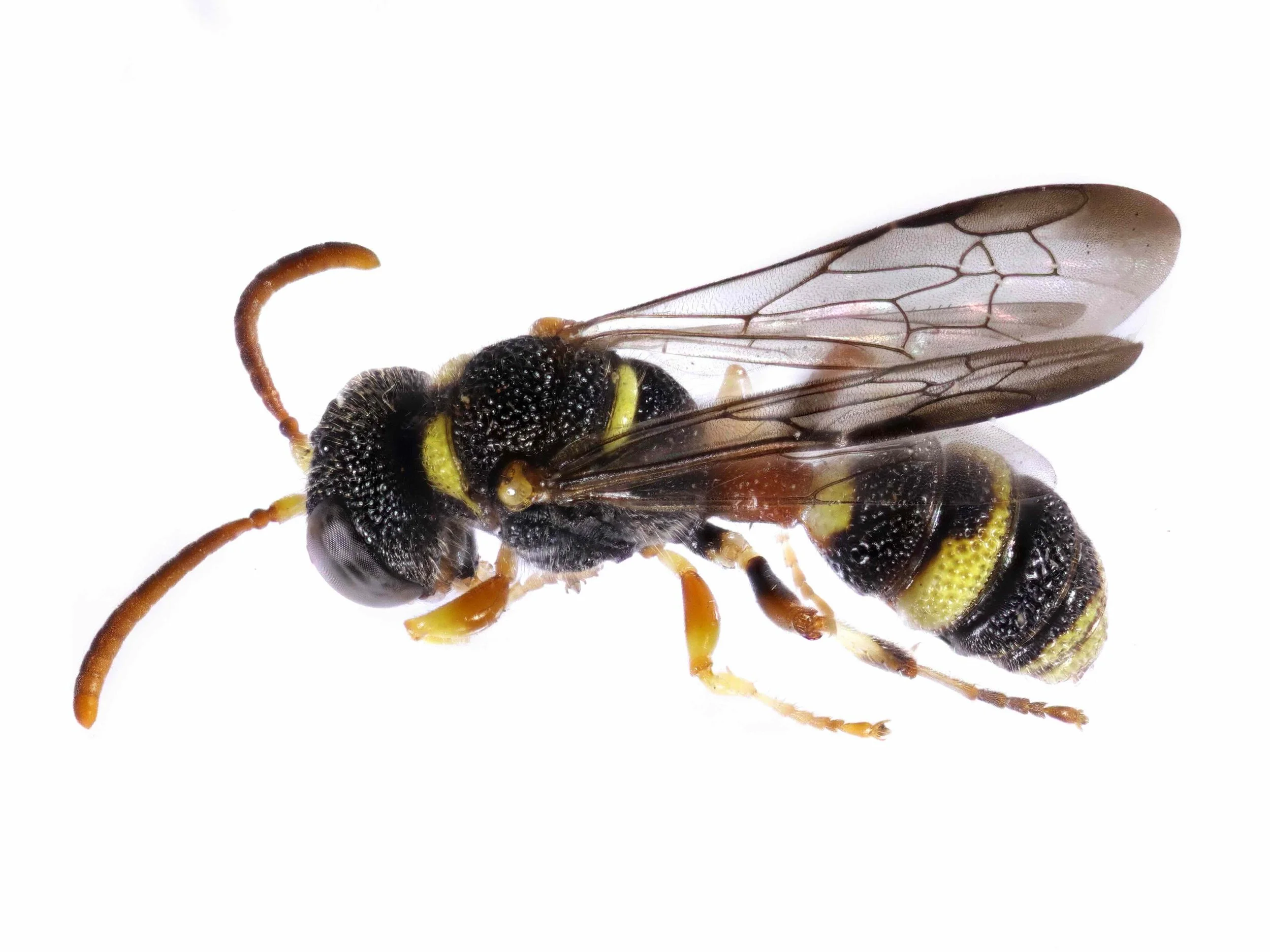
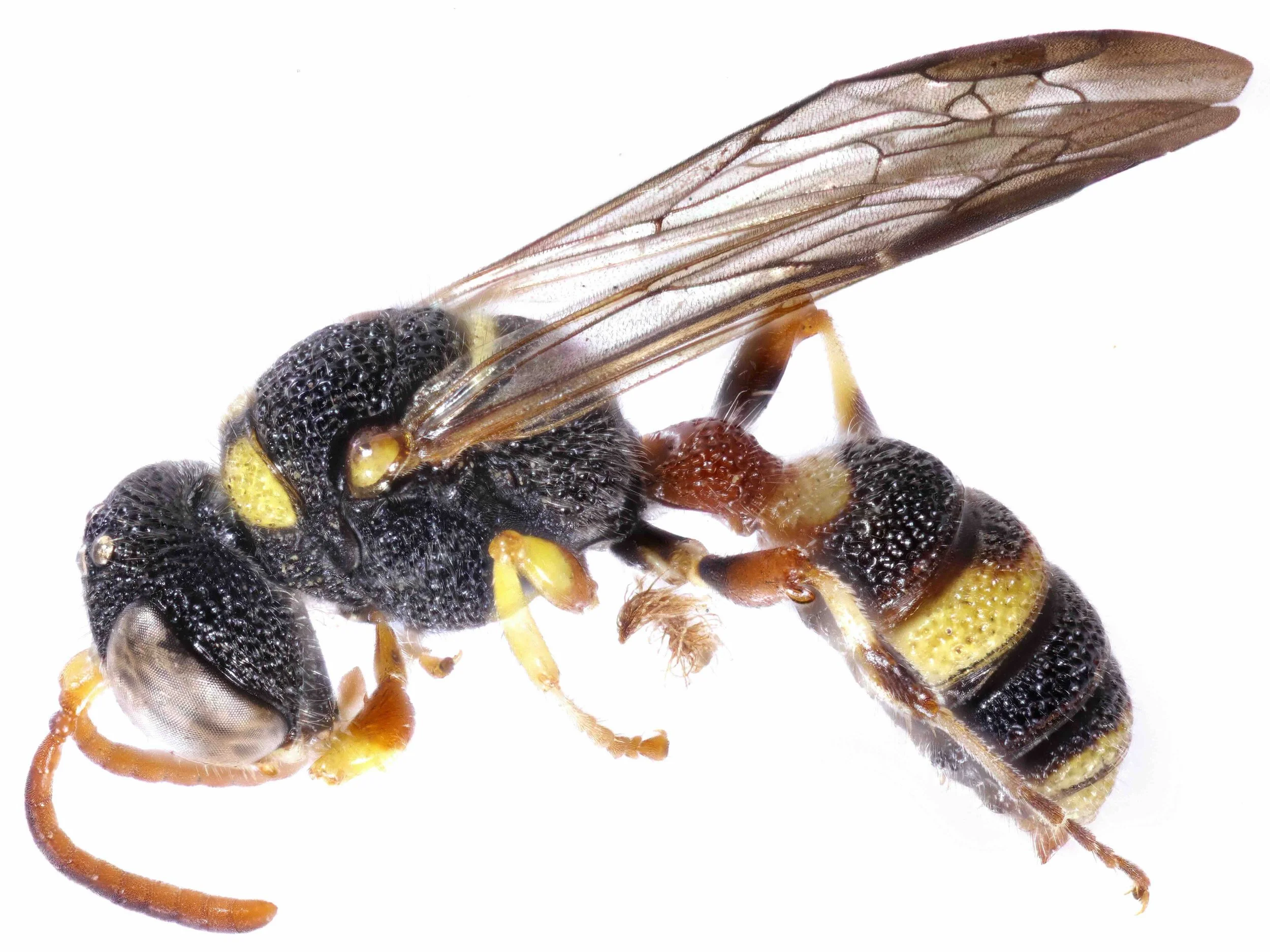


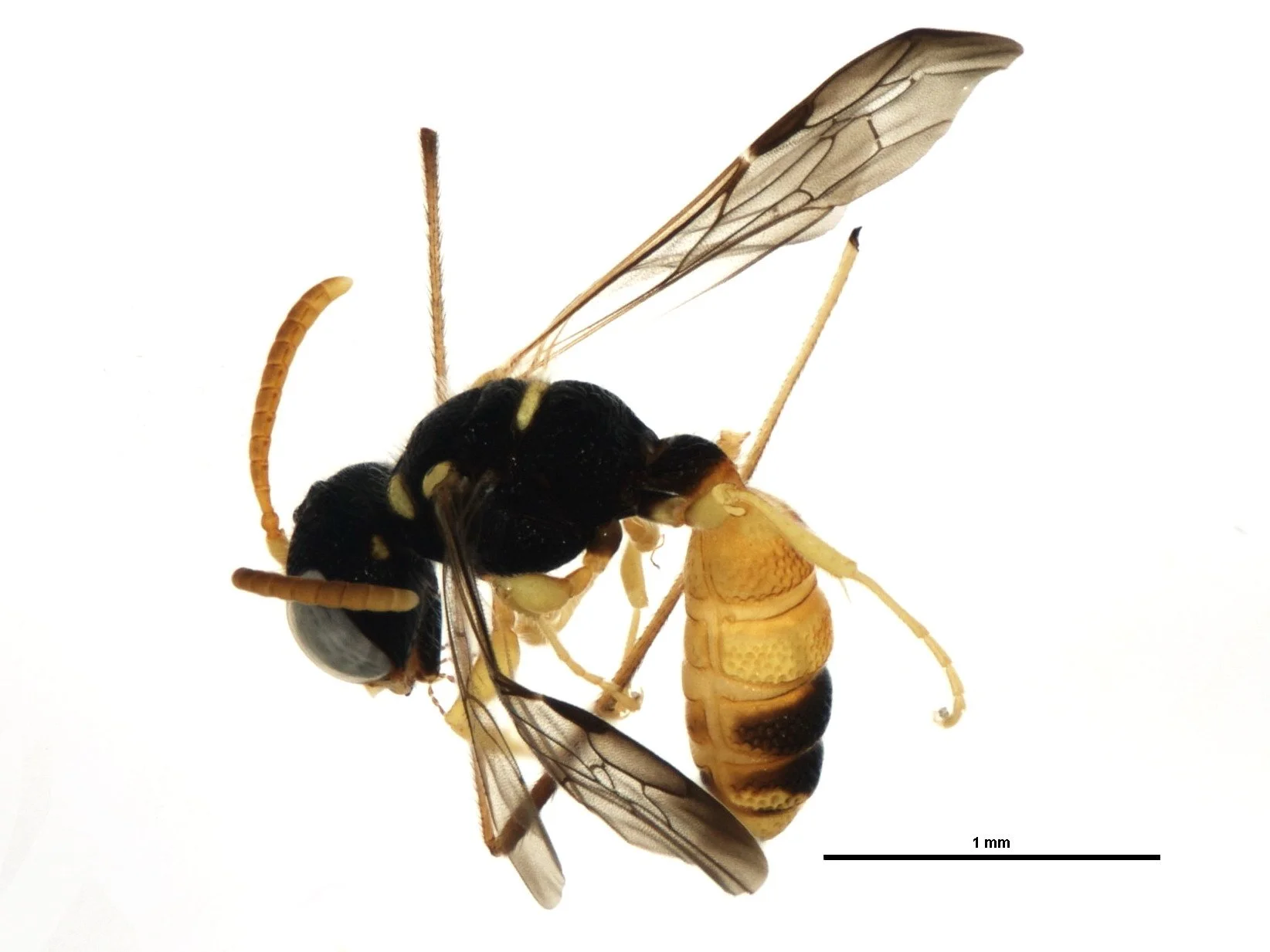
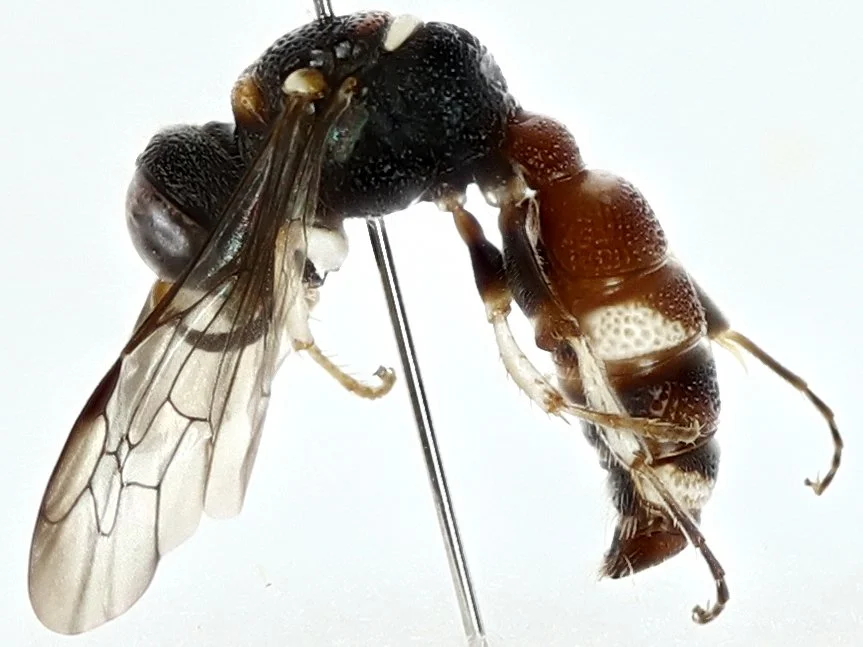
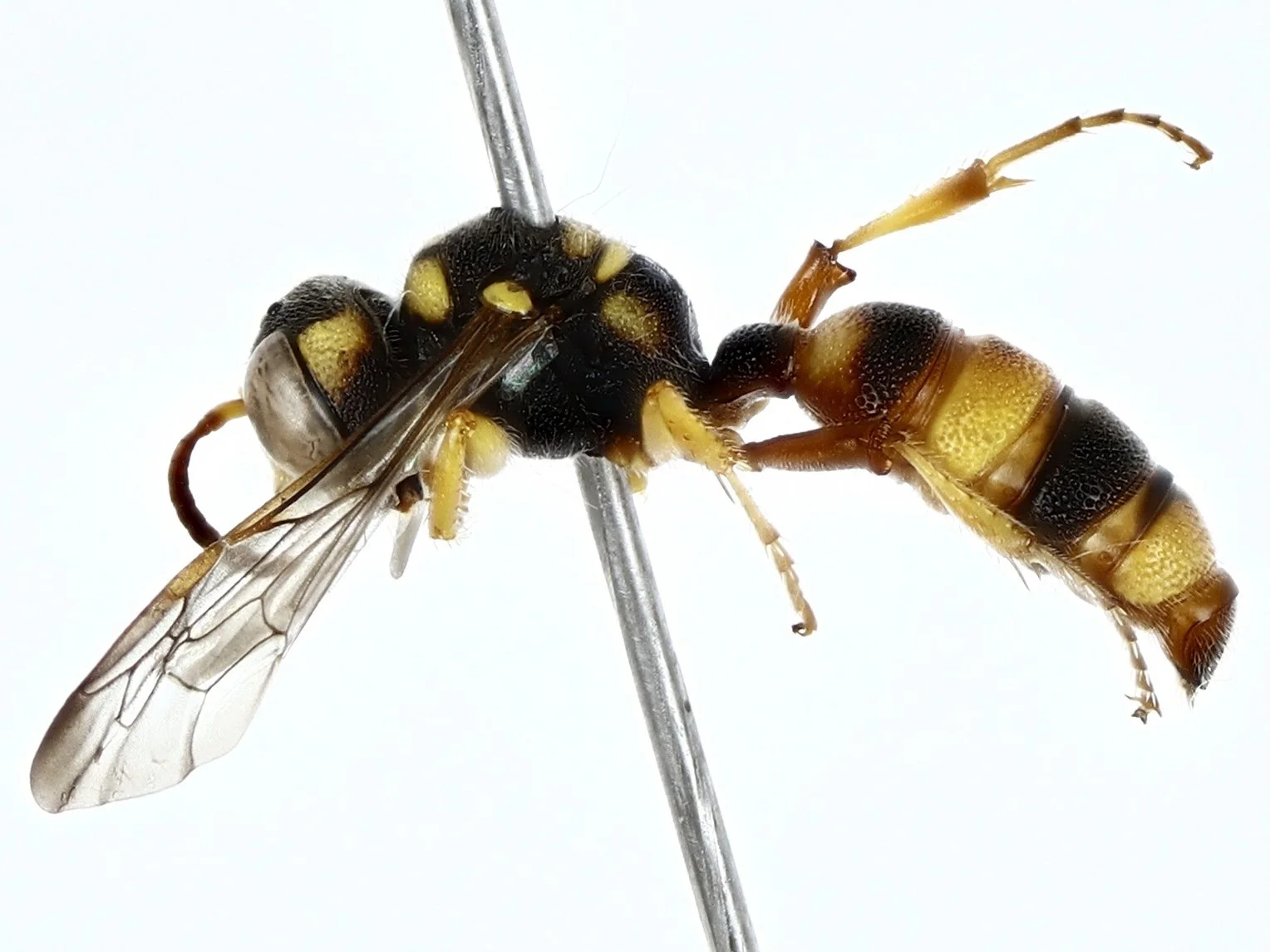
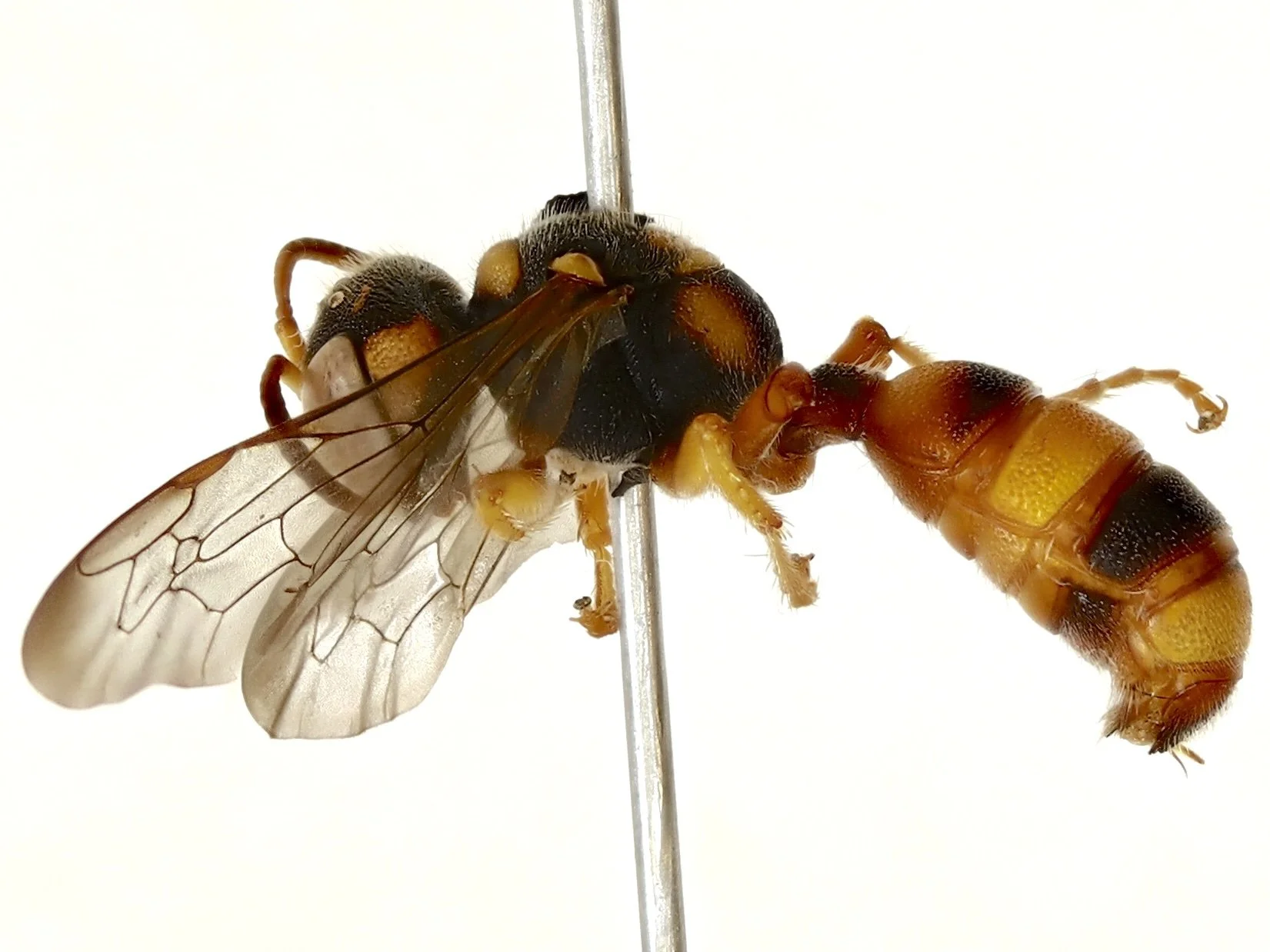
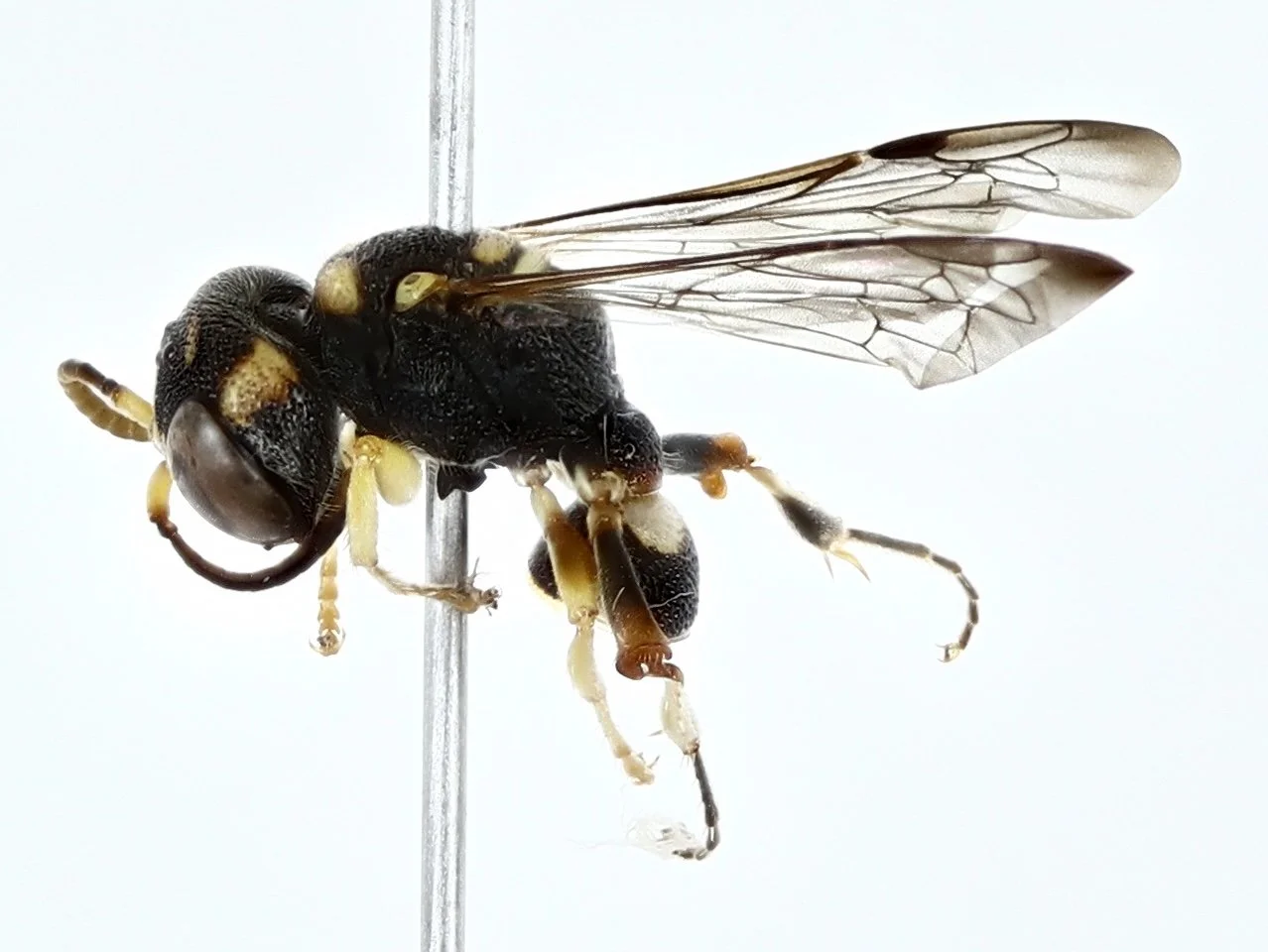
Select species, in detail
As opportunities arise, I take a closer look at individual Cerceris species.
This is a relatively common species throughout coastal and near-coastal Queensland. Thanks to Scott W. Gavins, I take a closer look at key identification features of the female … including the clypeal lamina and the mesopleuron.
Identification of our local Cerceris, based on Evans 1981 review of species from eastern Australia.
Life history and related ecological posts
Nesting Cerceris were among the first crabronids to attract my attention here in the forest. Over the years I’ve come to know them quite well, Where they nest and when. Who their neighbours are. Here are some of those tales.
Like most Crabronids, Cerceris are solitary wasps. Intriguingly, however, a few species display behaviours reminiscent of social insects. Our local species, Cerceris antipodes, is one such. I delve into the research literature to learn more about their nesting habits.
One small patch of sandy ground, so many ground-nesting insects! Seven species of crabronid, three bees, velvet ants … and more.
A detailed look at the nesting behaviour and identification of two more Crabronidae, Sphodrotes and Austrogorytes – with a Bembix and Cerceris thrown in, for good measure.
References
[Many of Howard Ensign Evans works are publicly available via Wikispecies]
Bohart, R,M. & Menke, A.S. 1976. Sphecid Wasps of the World: A generic revision. University of Calfornia Press.
Evans, H.E. 1982 (Dec 1981 edition). The genus Cerceris in eastern Australia (Hymenoptera: Sphecidae). Transactions of the American Entomological Society, 107(4): 299-380 available here
Evans, H.E. 1988. Further studies on the systematics and nesting behavior of eastern Australian Cerceris wasps (Hymenoptera: Sphecidae). Transactions of the American Entomological Society, 114(1): 1-13
Evans, H.E. & Hook, A.W. 1982. Communal nesting in the digger wasp Cerceris australis (Hymenoptera: Sphecidae). Australian Journal of Zoology, 30: 557-568
Evans, H.E. & Hook, A.W. 1986. Prey selection by Australian wasps of the genus Cerceris (Hymenoptera, Sphecidae). Journal of Natural History, 20: 1297-1307.
Evans, H.E. & Matthews, R.W. 1970. Notes on the nests and prey of Australian wasps of the genus Cerceris. Journal of Australian Entomological Society, 9: 153-156
Sann, M., Niehuis, O., Peters, R.S., Mayer, C., Kozlov, A., Podsiadlowsk, L., Bank, S., Meusemann, K., Misof, B., Bleidorn, C. & Ohl, M. 2018. Phylogenomic analysis of Apoidea sheds new light on the sister group of bees. BMC Evolutionary Biology. 2018 May 18;18(1):71. doi: 10.1186/s12862-018-1155-8
Turner, R.E. 1908. Notes on the Australian fossorial wasps of the family Sphegidae, with descriptions of new species. Proceedings of the Zoological Society of London 1908: 457-535
Turner, R.E. 1910a. Additions to our knowledge of the fossorial wasps of Australia. Proceedings of the Zoological Society of London 1910: 253-356
Turner, R.E. 1910b. New fossorial Hymenoptera from Australia. Transactions of the Entomological Society of London 1910: 407-429
Turner, R.E. 1912. A revision of the Australian species of the genus Cerceris. (Hymenoptera.). Proceedings of the Linnean Society of New South Wales 36: 644-678
Turner, R.E. 1936. Notes on fossorial Hymenoptera. XLV. On new sphecid wasps from Australia. Annals and Magazine of Natural History 10 18: 533-545
This is a workbook page … a part of our website where we record the observations and references used in making species identifications. The notes will not necessarily be complete. They are a record for our own use, but we are happy to share this information with others.
